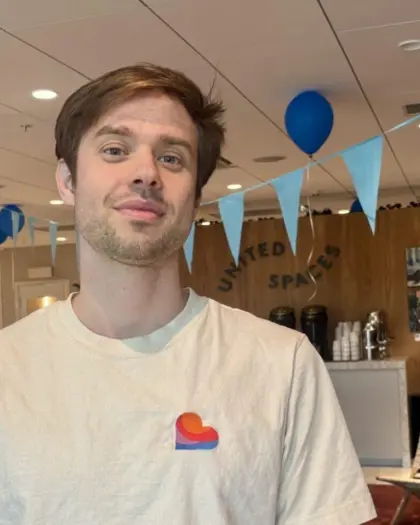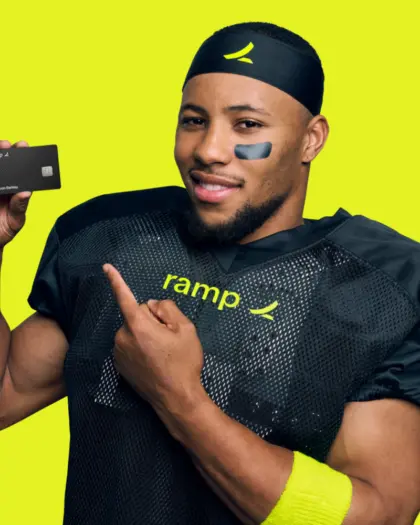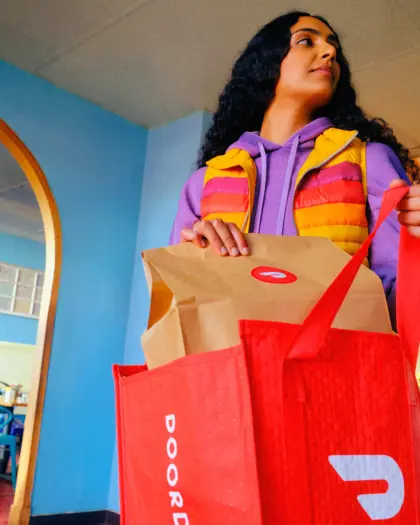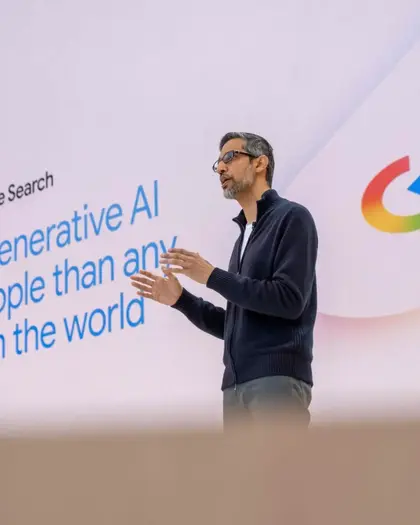Pioneering The Modern Dating Landscape
When Match.com launched in 1995, only 14% of the United States had internet access, and the notion of meeting a life partner (or even a short-term date) through a website was bizarre to most. Match.com, though, was a trailblazer. It helped establish the concept that people could, in fact, find romance - or at least exploration and fun - online. Fast-forward to the present, and Match Group, the parent company behind Match.com, Tinder, Hinge, and Plenty of Fish, is responsible for facilitating roughly half of all relationships that begin online in the United States. Their success story is both inspirational and instructive for anyone running a subscription-based service, because they have had to solve two problems simultaneously: how to attract and retain massive user bases, and how to grow revenues in a market where people naturally churn out as soon as they meet a partner and no longer want the service.
One of the biggest challenges in the dating sector has always been that if your product works perfectly, it eliminates its own customers. If someone downloads a dating app and quickly finds the love of their life, that’s fantastic for them but detrimental to long-term monetization. Today, many dating apps rely on a freemium model, where the essential features are free but certain valuable perks - such as being able to see who has liked your profile, or the ability to swipe endlessly - come at a cost. This hybrid approach brings in substantial revenue. Tinder, for instance, earned 1.9 billion dollars last year. The platform famously created the swipe-right mechanism, which revolutionized how people interact with prospective matches. However, that mechanism and Tinder’s early successes also hint at the core tension: when downloads begin to drop and user enthusiasm wanes, can such an app continue to scale or sustain growth?
I have noticed that user fatigue - particularly among younger generations who have grown up swiping - prompts many of these companies to seek a new wave of innovation. We are witnessing a partial backlash against “pure” dating apps, with some users craving deeper social or community elements. There are certainly users who still want immediate, casual connections, but there is also a growing demand for a more thoughtful, richer experience. From my perspective, it’s no coincidence that app developers are now embedding social networking features or harnessing artificial intelligence to serve as conversation starters or even, in more futuristic visions, as AI companions.
How Social Wrappers Drive Lasting Engagement
Hinge, launched in 2012, has thrived by marketing itself as the app “designed to be deleted.” Its approach is refreshingly direct: it claims to want you to find a partner and get off the app—an inherently anti-subscription message if one thinks about it superficially. Yet Hinge’s annual revenue has climbed to 396 million dollars, and paying users have increased by 31% year over year. This proves that an honest brand promise and a transparent user journey can drive higher user satisfaction, stronger word-of-mouth marketing, and sustained subscription uptake over time, especially if the app offers additional paid features that enhance the likelihood of meaningful matches. The key for Hinge has been to encourage people to see it as a more relationship-focused platform compared to Tinder, while still tapping into the same massive user base. When a user “graduates” from Tinder’s casual environment, they frequently end up at Hinge, and since both are within Match Group’s portfolio, the revenue can continue to circulate within the same overarching ecosystem.
I have found this portfolio approach to be strikingly effective, not only in dating, but also in other subscription-based mobile services. Maintaining multiple branded experiences allows you to capture different audiences at various life stages. In the context of dating, for instance, a user may want casual dating in early adulthood, then shift toward finding a serious partner as they mature, and in either phase, the same holding company can still benefit. Even those who meet a long-term partner and formally “leave” Tinder can migrate to Hinge, or some other app, for a new style of engagement. By building or acquiring platforms that address these micro-markets, a company retains profitable subscribers without them ever having to step outside the corporate umbrella. The same principle holds if you run an app in another segment - such as health, fitness, or personal finance -where user motivations often evolve over time.
Still, not every company can afford to purchase a rival app that caters to a different segment of users, and some have to find methods to keep people engaged even after the original goal is met. Grindr, for example, approaches the challenge from another angle. When it launched, Grindr was known primarily as a location-based app for queer men seeking casual encounters. Today, it has expanded to more than 13 million monthly users and collects over 260 million dollars in revenue yearly. Unlike certain competitors that want to be “deleted” once you find a partner, Grindr has built what they describe as a “Gayborhood in your pocket.” Many queer men maintain the app on their phones for non-romantic reasons, like travel tips or local community events, or simply to stay in touch with the friendships they’ve built. This brand identity as “the app to be kept” is a radical shift from the typical mentality in online dating, and it demonstrates how building a social community around a core dating function can substantially stretch the user’s lifecycle on the platform.
I consider this concept of a “social wrapper” essential for subscription-based apps. If a user is only paying for a specific outcome - like meeting a partner, losing weight, or finding a few short-term gig jobs—it becomes more challenging to retain them over the long haul once they achieve that goal. By designing an integrated community or additional services that foster ongoing engagement, an app can maintain relevance even if the user’s initial purpose changes. In my experience, these added social features can include message boards, friend-finding functionalities, user-generated content, or deeper experiential perks such as curated events or group activities. This often pairs well with tiered subscription levels: a user may pay more to be part of an exclusive subcommunity or gain full access to premium content that goes beyond the app’s original, narrowly defined service.
AI-Driven Personalization
One of the most intriguing strategies, in my opinion, is the integration of artificial intelligence to deliver personalized recommendations and “conversational intelligence.” AI thrives on large data sets, and dating apps have an abundance of data: messages exchanged, profiles liked or skipped, locations visited, times of day when users are most active, and so on. Grindr’s partnership with the AI company X Human to develop a “Grindr Wingman” shows how this data can be leveraged not just to optimize matching algorithms but to enhance the entire user experience. The AI might recommend a café for a first date based on both users’ preferences and mutual geographic convenience, or perhaps it could suggest the perfect music to play at home. Such features create a deeper sense of value and encourage user stickiness, because they transform the app from a mere matching tool into a personal assistant capable of enhancing offline experiences.
I see a similar potential for AI in virtually any subscription-based mobile product. If you run a fitness app, for example, your AI could analyze a user’s past workouts, dietary preferences, location, and schedule to propose the ideal timeslot for exercise or new recipes that fit both their goals and shopping habits. If you manage a language-learning platform, your AI might automatically propose conversation topics or reading material tailored to each user’s region, fluency level, or personal interests, thereby increasing daily active usage and making the premium subscription feel essential. These functionalities rely on large volumes of data and sophisticated algorithms. While that might be daunting, many developers can partner with specialized AI companies to integrate a next-level personalization layer. In my view, apps that stay AI-first and continuously iterate as data accumulates will hold a competitive edge over those that treat AI as a simple marketing gimmick.
AI can also help solve fundamental business challenges, such as the growing difficulty of user acquisition in saturated marketplaces. Every major subscription service grapples with rising advertising costs, making it critical to optimize each stage of the funnel. Through predictive analytics, an app can identify which users are most likely to churn or upgrade at a certain point. It can then trigger personalized discounts, targeted re-engagement messaging, or highlight new features at precisely the right moment to move them up the value chain. Properly implemented, this can significantly increase average revenue per user (ARPU) and improve lifetime value (LTV). Although the technical underpinnings of AI-based recommendation engines can be highly complex—often involving machine learning models like collaborative filtering, neural networks for natural language processing, or advanced clustering mechanisms—the payoff in greater retention and monetization is massive.
How Niche Focus and Diversification Conquer the Churn Cliff
However, not all apps are built on the premise of indefinite usage, so I find Muzz’s approach especially notable. Muzz was created to serve Muslims who want to find a spouse, a central milestone in many users’ religious and cultural lives. Because marriage is the primary outcome, it might seem that Muzz’s monetization capacity would be capped at the point of the wedding. Yet the app has introduced social networking features so that even those who have successfully found a partner can stay active in the community. There are built-in functionalities that mirror the unique cultural nuances of Muslim dating—such as chaperone options or allowing women to decide when men can see their photos—while also evolving to allow new forms of interaction after marriage. Muzz has more than a million monthly active users and over 20 million dollars in annual revenue, and they credit much of that success to the authenticity of the user experience and the sense that the platform genuinely understands the cultural context of Muslim relationships. This illustrates how, by focusing sharply on a niche audience’s needs, an app can sustain strong engagement and loyalty, even in a broader market where users might otherwise jump to a competitor.
Bumble also demonstrates the idea of positioning an app as more than a place to find romantic relationships. Bumble was established with a mission to empower women: it mandated that women make the first move in heterosexual matches, challenging prevailing norms. Over time, Bumble expanded to include Bumble BFF (to help users find platonic friendships) and Bumble Bizz (to foster professional networking). This multi-vertical approach netted them 42 million monthly active users and generated over a billion dollars in annual revenue. By diversifying, they have set themselves apart from Tinder, capturing a demographic that values Bumble’s brand persona as a socially conscious, female-forward space. In essence, Bumble has made it easier for people to keep the app on their phones even if they are temporarily uninterested in dating. For me, this highlights the importance of building what I sometimes call a “hub platform,” where multiple complementary user needs can be met under one brand identity. That approach not only spreads risk across different user funnels but also can increase brand loyalty because people perceive Bumble as relevant in multiple facets of their lives.
I view these examples as master classes in avoiding the dreaded churn cliff that so often accompanies success in mission-focused apps. When the only reason for subscribing is to solve a single, pressing need—like finding a romantic partner—there is a natural end date. The user either finds what they want, or they decide the service doesn’t work for them, and they leave. Tinder has felt this pressure, as the number of people willing to pay for its premium features has been shrinking for six consecutive quarters, even though it still has over 50 million monthly active users. The lesson here is that brand strength and first-to-market advantage cannot forever counterbalance stagnation in product evolution. Users simply won’t keep shelling out monthly fees if they see no new value.
Segmentation, Flexibility, Community, and AI
In my opinion, the path forward for subscription-based apps lies in combining four essential pillars.
First, there is the need for an in-depth understanding of the user’s evolving goals. If you can segment your user base by different stages of their journey - be it dating casual acquaintances vs. seeking long-term relationships, or novices vs. advanced learners in a language app—you can build different tiers, features, or even entire sister products that speak to each stage.
Second, the monetization model must be flexible. Users should feel that paying a monthly fee, or investing in a one-time purchase, grants them a tangible advantage. That might be more profile visibility in a dating environment, or advanced analytics in a fitness context, or specialized coaching in a productivity tool. The more you can tailor these paid options to actual user pain points, the more naturally they will convert.
Third, I stress the power of social and communal features. People are far less likely to leave an app where they have meaningful connections - friends, subcommunities, or entire social circles built around the platform. Even if the original reason for joining no longer applies, the social layer can sustain usage indefinitely. This is a particularly useful strategy for smaller or niche apps that lack the capital to buy up rival platforms. Instead, they can evolve their core service into a broader social ecosystem, driving repeated usage and engagement. I think Grindr has perfected this with its identity as a “Gayborhood,” while Bumble and Muzz each found unique ways to keep people involved in social or community-based features after the romantic goal is satisfied.
Lastly, I consider data and AI integration to be the key to pushing personalization to the next level. Having massive amounts of user data alone does not guarantee retention or higher revenue. What matters is translating that data into individualized experiences—surfacing exactly the right content, offering timely upsells, and even generating AI-driven suggestions or tools that consistently add unexpected but delightful value. This concept of “surprise and delight” drives user loyalty and makes subscriptions feel less like a monthly drain and more like an investment in a product that truly “gets” its users.
Building a Lifecycle-Focused Subscription App Model
To ensure that these ideas are actionable, I encourage founders to consider the entire customer lifecycle at a granular level. Acquiring users via ads, influencer marketing, or word-of-mouth is only the first piece; analyzing each step of onboarding, the moment of first conversion to paid, and the intervals at which users typically churn can shed light on where to inject social hooks, AI-driven recommendations, or carefully calibrated premium features. Continuous experimentation is crucial: A/B testing new pricing plans, trying out fresh subscription tiers, introducing community-based initiatives, and monitoring how engagement metrics shift in response. The best dating apps frequently change up their monetization strategies—for instance, offering discounted trials at strategic times or rolling out new paid features to small user subsets for testing. These tactics are not exclusive to dating; they illustrate the iterative mindset that all subscription-based mobile apps should adopt.
Online dating platforms are shifting toward more holistic social experiences and ever-more sophisticated AI integration, and this trend will only accelerate. I believe we will witness apps harnessing advanced conversational agents that help users not just with introductions but also in planning every detail of dates or even complementing them with AI companions if loneliness persists. From a broader perspective, any subscription-based app that wants to outlast fickle consumer tastes should pay close attention to how these companies expand horizontally (into new categories like friendships or professional networking) and vertically (adding AI-driven personalization, VIP tiers, and specialized in-app purchases).








































